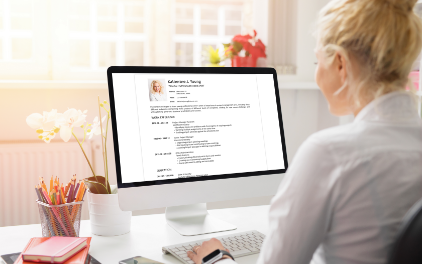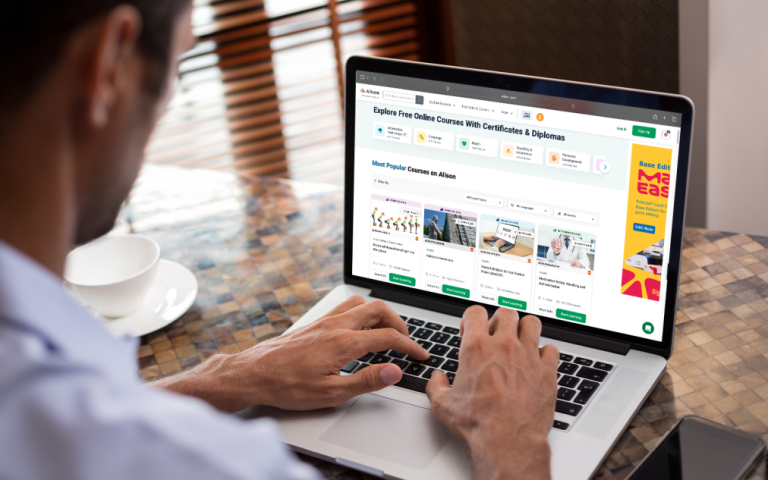If you’ve ever wished for a few minutes in the elevator with your idol, an investor, a thought leader, the boss, or the CEO at the company you dream of working for to pitch your idea or yourself? Well, every time you send out your resumé, you are doing just that. Your resumé is your elevator pitch, on paper, to the person who can help change the course of your career. Unfortunately, many people don’t know how to craft an eye-catching CV that will land them a callback for an interview. We’re here to help. Below, we’re giving you the tips and best practices for crafting an attention-grabbing resumé.
What is a resumé?
Your resumé is a formal document that prospective applicants use to give an overview of your qualifications, work experiences, skills, notable accomplishments, and goals for a position. Its purpose is to show potential employers what makes you the best candidate to assume the position advertised. At a basic level, your resumé contains:
Types of resumés
There are different resumé formats. They each serve a specific purpose and emphasize areas of focus that the company will be looking for. Certain organisations and job roles may need you to submit a particular type of resumé that highlights what the company is looking for. These are:
- Chronological resumé: this leads with an introduction and then gives an overview of your working history, starting with your most recently held post. This is best if you have different experience levels.
- Functional: a functional resumé focuses more on your skills and abilities instead of showing your career growth. It’s ideal for those who have gaps in their career or those looking for a career change and thus has a short work experience section and a larger portion dedicated to your skills.
- Combination: as the name suggests, this resumé combines aspects of the chronological and functional type, presenting a balance of your work history and skills. This type of resumé is ideal for individuals with extensive work experience and a high calibre of skills.
- Targeted: this is for those applying for a specific position and highlights the key skills and experience related to the advertised position. Each section of the resumé emphasizes the qualifications and includes the skills, traits, and responsibilities you have and the requirements for the job post.
Best practices for crafting a resumé
You can easily be tempted to include all your skills, experiences, and qualifications on your resumé. What you should do is avoid going overboard. Here are the best practices for crafting that attention-grabbing resumé.
- Keep it simple
The first and probably most important rule of crafting a resumé is to keep it short and simple. The way to do this is to succinctly detail the relevant information for the job you’re applying for. You don’t have to include every detail of your job history. Too much information and your resume become too busy and difficult to draw out relevant information. Simple. Succinct.
- Give a career snapshot
Career experts now suggest that instead of adding a statement at the top of your resumé, instead give a summary, a “career snapshot”. A career snapshot is your personal brand statement. It answers the question, “Describe your work experience in a single sentence”. You share the value you bring, your skills, and your qualifications. Below this, add a few bullet points to highlight your experience but make sure what you include is relevant to the position you’re applying for.
- Make it readable
Employers see hundreds of resumés. Choose an original template that will make yours stand out from the others and clearly identifies your qualifications. If you’re applying for a job in tech or graphic design, find a template that best demonstrates these skills and plays to your assets. You need to structure your resumé in a way that the information has a nice flow and your strongest points and qualities shine through here.
Alison has a fantastic Resume Builder tool that can help you build the perfect resumé tailored to each job application and position you’re vying for.
- Use your words wisely
You have a short time to impress the reader so make sure you choose keywords in your resumé that will get past the screener like an applicant tracking system (ATS). Include words used in the job post that apply to you and add these to your resumé.
Here, you want to use active words like accelerated, achieved, improved, drove, and leveraged that show the work you have done. They read much better than passive words. Also try not to repeat the active words you use so that whoever your resumé lands in front of, doesn’t get bored. Be sure you get the message across, your suitability for the position, as effectively as possible.
- Highlight your success
Let your resumé highlight your past successes for your team and organisation. You want to put your best foot forward showing what you have done and what you can do for them. Don’t skim over the challenges you experienced, but speak specifically about the results you achieved, how you overcame them, and your accomplishments by using numbers for effect.
- List your soft skills
Soft skills, the personal attributes that enable you to interact well with others, are highly sought after in the workplace. Briefly list which soft skills you possess and believe qualify you and would help you flourish in the position you’re applying for. A tip? These are usually found in the job description. Add these throughout your resumé in your work background and skills sections.
Additionally, before hitting send, proofread it. Spell Check is your friend. Mistakes do happen but you don’t want your resumé to be filled with silly typos and grammatical errors. Come back to your resumé after time away and look it over for any mistakes you may have missed.
Crafting an attention-grabbing resumé takes time and needs special attention to get just right. Remember that you want to focus on your positives and outline your career background that shows your quality and suitability in the best possible light. Alison’s Workplace Personality Test can help you discover your strengths, and the results will serve as a guide to what career path you’re best suited for.
Follow these best practices and you’ll be well on your way to receiving that invitation to interview.









